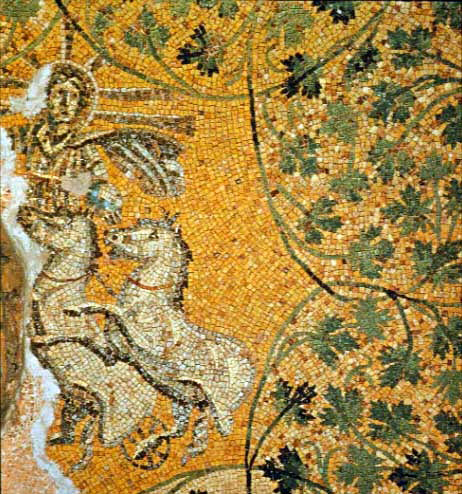There are two theories of why Christmas Day is 25 December, the announcement theory and the appropriation theory.
The Annunciation, the announcement by Gabriel to Mary that she would conceive and bear a son through a virgin birth, is usually celebrated on 25 March. The announcement theory is that nine months works.
The appropriation theory is that Roman Christians appropriated festivities associated with the Roman god Sol Invictus the unconquered sun.
The earliest document we have which mentions both incidents is the Chronograph of 354, the work of Furius Dionysius Filocalus, a professional engraver with perhaps not the most Christian names in the world.
In the sixth part of the document, the entry for what we call 25 December is “N·INVICTI·CM·XXX”; shorthand for “Birthday of the unconquered, games ordered, thirty races”.
In the twelfth part, the commemoration days for martyrs, there is “VIII kal. Ian. natus Christus in Betleem Iudeae”, or “Eighth day before the kalends of January Birth of Christ in Bethlehem of Judea”.
While the sun is express in the appropriation theory, it is implicit in the announcement theory, as 25 March is the usual day for the spring equinox.
The idea of the Sun as a supreme god is familiar to many cultures and its presence cannot surprise us.
If you sang carols this year, you may have sung “Hark! the herald angels sing”. The third stanza contains the couplet “Hail the Heav’nly Prince of Peace! // Hail the Sun of Righteousness!”
The word “Sun” is not a typo. It is a reference to Malachi, the last book of the Christians’ Old Testament wherein Jesus is foretold:
But unto you that fear my name shall the Sun of righteousness arise with healing in his wings; and ye shall go forth, and grow up as calves of the stall.

A mosiac beneath the Vatican, dating from the third century.